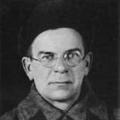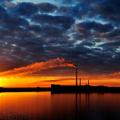Ural Mountains interesting facts presentation. Presentation on the topic "Ural Mountains"

Natural complex URAL

- In ancient sources, the Ural Mountains are called the Riphean or Hyperborean Mountains.
- Russian pioneers called it Stone; under the name Ural, these mountains were first mentioned in Russian sources at the end of the 17th century.
- The name Ural was introduced by V. Tatishchev from the Mansi “ur” (mountain). According to another version, this word is of Turkic origin.
 1 million km². Length more than 2000 km, width from 40 km in the north to 150 km in the south. Start with o. Vaygach, stretch along the 60th parallel, pass into the Guberlinsky mountains, the Mugodzhary mountains, and end at the shore of the Aral Sea with the General Syrt plateau and the Turgai plateau. The border between Europe and Asia passes through the Urals. The mountains have a barrier position relative to the western transport of air masses. "width="640"
1 million km². Length more than 2000 km, width from 40 km in the north to 150 km in the south. Start with o. Vaygach, stretch along the 60th parallel, pass into the Guberlinsky mountains, the Mugodzhary mountains, and end at the shore of the Aral Sea with the General Syrt plateau and the Turgai plateau. The border between Europe and Asia passes through the Urals. The mountains have a barrier position relative to the western transport of air masses. "width="640" Geographical position
- The mountains are located between the East European and West Siberian plains, S 1 million km².
- Length more than 2000 km, width from 40 km in the north to 150 km in the south.
- Start with o. Vaygach, stretch along the 60th parallel, pass into the Guberlinsky mountains, the Mugodzhary mountains, and end at the shore of the Aral Sea with the General Syrt plateau and the Turgai plateau.
- The border between Europe and Asia passes through the Urals.
- The mountains have a barrier position relative to the western transport of air masses.

Relief: mountainous
- The Ural Mountains are lower than other mountains in Russia.
- The maximum point is Narodnaya (1895 m), the minimum point is at
passes – 500 m.
- The Urals consists of parallel flat-topped ridges separated by longitudinal and transverse valleys.
Narodnaya
Highest peaks

Orographic scheme
- The Ural Mountains have an asymmetrical structure: the western slope is gentle, the eastern slope is steep.
- The central part is narrow and has the greatest heights.

Tectonic structure
1- formation of mountains in the late Paleozoic during the era of intense mountain building (Hercynian folding);
2- series of faults in the Mesozoic;
3 – neotectonic movements in the Cenozoic, the formation of modern folded block mountains.
Three major geological stages in history:
 200: emerald, amethyst, aquamarine, jasper, rhodonite, malachite, etc.), jewelry diamonds. "width="640"
200: emerald, amethyst, aquamarine, jasper, rhodonite, malachite, etc.), jewelry diamonds. "width="640" Minerals
- There are 48 types of minerals in the Ural Mountains.
- The main ones are: copper, iron, nickel and chromite ores, gold, platinum, bauxite, asbestos, oil and gas, potassium salts.
- The Urals are especially famous for their “gems” - precious, semi-precious and ornamental stones ( 200: emerald, amethyst, aquamarine, jasper, rhodonite, malachite, etc.), jewelry diamonds.

Climate of the Urals
- influence of western cyclones;
- orographic precipitation mild winter in the west;
- minimal quantities and cold, partly cloudy weather in the east;
- sharp cold snap in winter from the north;
- droughts in summer in the south.
Climate-forming factors:
- westerly air transport;
- proximity to the Arctic Ocean;
- great elongation from north to south.

Inland waters
- The Ural is a watershed between the rivers of Europe and Asia. The main watershed is shifted to the east, so the rivers on the western slope are longer.
- Here are the sources of many rivers: the Pechora, Kama, Ural, tributaries of the Ob. The most beautiful river is Chusovaya.
- There are many rapids with gorges.
- Underground waters created beautiful caves - Kungurskaya, Divya, Medvezhya, Skaz, Smolinskaya, Druzhba.
- There are more than 6 thousand lakes, mostly tectonic.
Chusovaya River
Kungur Ice Cave

Natural-territorial complexes of the Urals
- In terms of the diversity of natural zones, the Urals are similar to the East European Plain, but the boundaries of natural zones are shifted to the south; Due to the low height of the mountains, altitudinal zonation is poorly expressed.

Northern Urals
Pai Hoi
Middle Urals
Southern Urals
Polar Urals
Subpolar Urals

Plan
Average and maximum heights
Pai - Khoy
Altitudinal zonation and vegetation
Polar
Circumpolar
Natural resources
Northern
Natural uniqueness
Differences in the nature of the Cis-Urals and Trans-Urals
Average
Oslyanka, the highest peak of the Middle Urals. Height 1119 m. There are two versions of the origin of the name of the mountain. The name of the river is Oslyanka, from the ancient Russian word “ass” - a whetstone, a river sharpening stone. The shape of the mountain, from the word “oslyad” or “osledina” - log. The mountain extends meridionally for 16 km. The ridge is leveled, mostly wide; in places narrow, steep, rocky. Has several peaks; the main one is located in the central part of the mountain, shifted to the eastern slope, and has a cone-shaped shape. The slopes are steep; The northern and eastern slopes have the greatest steepness. In the northern half of the mountain there are rocky outcrops and weathering remains. The slopes are covered with kurums; Mountain terraces are developed on the ridge. Avalanches have been observed. It is composed of quartz and pale-spar-quartz quartzite-sandstones of Upper Proterozoic age. Located in the northeast of the Kizelovsky district of the Perm Territory; in the axial part of the Middle Urals, north of the Basegi ridge, east-southeast of the Nyarovsky Kamen mountain.
Ural Mountains
Slide 2
Ural
The Urals is a unique geographical region along which the border of two parts of the world passes - Europe and Asia. Several dozen monuments and memorial signs have been installed along this border for more than two thousand kilometers.
Slide 3
Interestingly, the term “Ural” did not exist until the 18th century. We owe the appearance of this name to Vasily Tatishchev. Until this moment, only Russia and Siberia existed in the minds of the country’s inhabitants. The Urals were then classified as Siberia.
Where did the toponym “Ural” come from? There are several versions on this matter, but the most likely is that the word “Ural” came from the Bashkir language. Of all the peoples living in this territory, only the Bashkirs from ancient times used the word “Ural” (“belt”).
Slide 4
The region is based on the Ural mountain system. The Ural Mountains stretch for more than 2,500 km - from the cold waters of the Arctic Ocean to the deserts of Kazakhstan.
Slide 5
Geographers divided the Ural Mountains into five geographical zones: Polar, Subpolar, Northern, Middle and Southern Urals. The highest mountains in the Subpolar Urals. Here, in the Subpolar Urals, is the highest mountain of the Urals - Mount Narodnaya.
Slide 6
Narodnaya
Slide 7
Manaraga is the most beautiful peak of the Subpolar Urals
Slide 8
Polar Urals
Polar Ural is a mountainous region in the north of Eurasia, on the territory of Russia, the northernmost part of the Ural Mountains. The northern border of the region is considered to be Mount Constantine Stone, and the region is separated from the Subpolar Urals by the Khulga River. Area - about 25,000 km².
Slide 9
Mount Konstantinov Kamen - the northernmost point of the Ural Range
Slide 10
Northern Urals
The Northern Urals are part of the Ural Mountains, stretching from the Kosvinsky Kamen and the neighboring Konzhakovsky Kamen (59° N) in the south to the northern slopes of the Telposis massif, or more precisely, to the bank of the Shchuger River, which goes around it from the north.
Slide 11
The town of Konzhakovsky Kamen with the town of Ostray Kosva in June
Slide 12
View of Denezhkin Stone from height 981 of the Main Ural Range
Slide 13
The lowest mountains are in the Middle Urals, which is also the most developed and densely populated.
Slide 14
Middle Urals
The Middle Urals is the lowest part of the Urals, lies between 56° and 59° N. w. , approximately 60°E. d. Average heights are 250-500 m, in the north up to 994 m (Mount Middle Baseg). Mount Jurma is considered the southern border.
Slide 15
Kachkanar
Slide 16
Visimsky Reserve - a natural attraction of the Middle Urals
Slide 17
Southern Urals
Southern Ural is the widest southern part of the Ural Mountains. The mountains of the Southern Urals represent the remnants of an old mountain system, which, along with the entire territory of the modern Chelyabinsk region, covered a significant adjacent part of modern Bashkortostan and the territories to the east of the region. Even earlier, apparently, there was an ancient ocean in this place.
Slide 2
The Ural Mountains are a mountain system between the East European and West Siberian plains. The length is more than 2000 (with Pai-Khoi and Mugodzhary - more than 2500]) km, width from 40 to 150 km.
Slide 3
The history of the discovery of the Ural Mountains begins in antiquity. It would be more accurate to say that this is the story of a discovery specifically for our civilization, but in general people settled the Urals at much earlier times. We find the first written mentions of the Ural Mountains among the Greeks. They talked about the Imaus Mountains, the Riphean Mountains and the Hyperborean Mountains. Now it is very difficult to establish which part of the Ural Mountains the pundits of ancient Greece and Rome were talking about, because their narratives are very richly supplied with legends, fairy tales and outright fables. It is clear that they themselves had never been to the Urals and heard about the Ural Mountains from third or even fourth and fifth lips. Somewhat later, more detailed information about the Ural Mountains could be gleaned from Arab sources. The Arabs talked about the country of Yugra, where the Yura people lived. In addition, descriptions of such countries as Visa, the country of Yajuja and Majuja, Bulgaria, etc. probably refer specifically to the Urals. All Arab sources agree on one thing: the territory of the Ural Mountains was inhabited by ferocious people and therefore was closed to travelers. Also, they all unanimously speak about harsh climatic conditions, which actually allows us to say that they mean the Urals. But, despite these facts, their attention was still focused on the Ural Mountains, because it was here that there was the source of the two most important currencies of the Middle Ages - furs and salt, which were quoted no less than gold and precious stones.
Slide 4
In ancient sources, the Ural Mountains are called the Riphean or Hyperborean Mountains. Russian pioneers called it Stone; under the name Ural, these mountains were first mentioned in Russian sources at the end of the 17th century.
Slide 5
The Urals have long been considered the border between two parts of the world: Europe and Asia.
Slide 6
Border between Europe and Asia
Slide 7
In the Urals, according to differences in altitude, climatic conditions, and geological development, several parts are distinguished: Polar, Subpolar, Northern, Middle and Southern Urals.
Slide 8
* Polar Urals - Mount Payer (1499 m above sea level) * Subpolar Urals - Mount Narodnaya (1895 m) * Northern Urals - Mount Telposis (1617 m) * Middle Ural - Mount Oslyanka (1119 m) * Southern Urals - Mount Yaman- Tau (1640 m above sea level)
Slide 9
The climate of the Urals is typical mountainous; precipitation is distributed unevenly not only across regions, but also within each region.
Slide 10
Among the natural resources of the Urals, the most important are its mineral resources. The Urals have long been the country's largest mining and metallurgical base. And the Urals ranks first in the world in the extraction of some mineral ores.
There are many lakes, Lake Tavatuy is known (about 50 km north of Yekaterinburg), as well as the so-called Chelyabinsk lakes - several hundred large and small lakes located in the north of the Chelyabinsk and partly in the southeast of the Sverdlovsk regions. Some of them (Uvildy, Irtyash) have a length of more than 10 km. The Chelyabinsk lakes also include lakes Turgoyak, Bolshie Kasli and others.
Slide 11
Flora
The nature of the vegetation of the Cis-Urals and Trans-Urals is not the same. In the taiga of the Cis-Urals there are more fir-spruce forests and fewer pine forests. In the Trans-Urals, pine forests are especially common. In the Cis-Urals, to the south of the taiga, there are broad-leaved forests, but in the Trans-Urals there are none.
 Fauna
Fauna A couple of centuries ago the animal world was richer than it is now. Plowing, hunting, and deforestation have displaced and destroyed the habitats of many animals. Wild horses, saigas, bustards, and little bustards have disappeared. Herds of deer migrated deeper into the tundra.
A couple of centuries ago the animal world was richer than it is now. Plowing, hunting, and deforestation have displaced and destroyed the habitats of many animals. Wild horses, saigas, bustards, and little bustards have disappeared. Herds of deer migrated deeper into the tundra. Did not find an answer to your question? Look at here
Did not find an answer to your question? Look at here